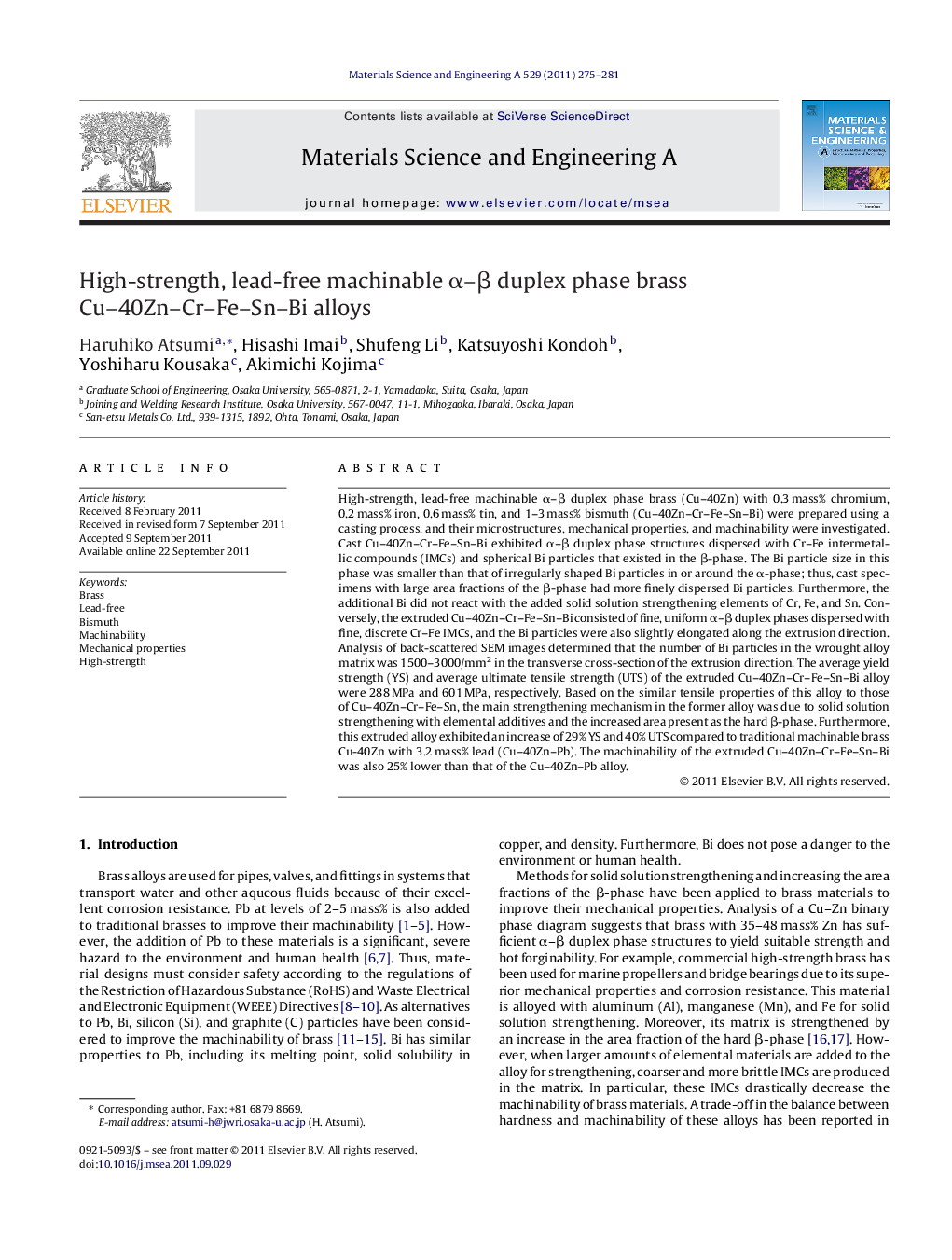| Article ID | Journal | Published Year | Pages | File Type |
|---|---|---|---|---|
| 1578159 | Materials Science and Engineering: A | 2011 | 7 Pages |
High-strength, lead-free machinable α–β duplex phase brass (Cu–40Zn) with 0.3 mass% chromium, 0.2 mass% iron, 0.6 mass% tin, and 1–3 mass% bismuth (Cu–40Zn–Cr–Fe–Sn–Bi) were prepared using a casting process, and their microstructures, mechanical properties, and machinability were investigated. Cast Cu–40Zn–Cr–Fe–Sn–Bi exhibited α–β duplex phase structures dispersed with Cr–Fe intermetallic compounds (IMCs) and spherical Bi particles that existed in the β-phase. The Bi particle size in this phase was smaller than that of irregularly shaped Bi particles in or around the α-phase; thus, cast specimens with large area fractions of the β-phase had more finely dispersed Bi particles. Furthermore, the additional Bi did not react with the added solid solution strengthening elements of Cr, Fe, and Sn. Conversely, the extruded Cu–40Zn–Cr–Fe–Sn–Bi consisted of fine, uniform α–β duplex phases dispersed with fine, discrete Cr–Fe IMCs, and the Bi particles were also slightly elongated along the extrusion direction. Analysis of back-scattered SEM images determined that the number of Bi particles in the wrought alloy matrix was 1500–3000/mm2 in the transverse cross-section of the extrusion direction. The average yield strength (YS) and average ultimate tensile strength (UTS) of the extruded Cu–40Zn–Cr–Fe–Sn–Bi alloy were 288 MPa and 601 MPa, respectively. Based on the similar tensile properties of this alloy to those of Cu–40Zn–Cr–Fe–Sn, the main strengthening mechanism in the former alloy was due to solid solution strengthening with elemental additives and the increased area present as the hard β-phase. Furthermore, this extruded alloy exhibited an increase of 29% YS and 40% UTS compared to traditional machinable brass Cu-40Zn with 3.2 mass% lead (Cu–40Zn–Pb). The machinability of the extruded Cu–40Zn–Cr–Fe–Sn–Bi was also 25% lower than that of the Cu–40Zn–Pb alloy.
► High strength and lead-free machinable Cu–40Zn–Cr–Fe–Sn–Bi alloys were investigated. ► The average ultimate tensile strength (UTS) of the extruded alloys was 601 MPa. ► They had 40% UTS higher than the conventional machinable brass Cu–40Zn–Pb alloy. ► The machinability of them also maintained 75% of that of the Cu–40Zn–Pb alloy.
